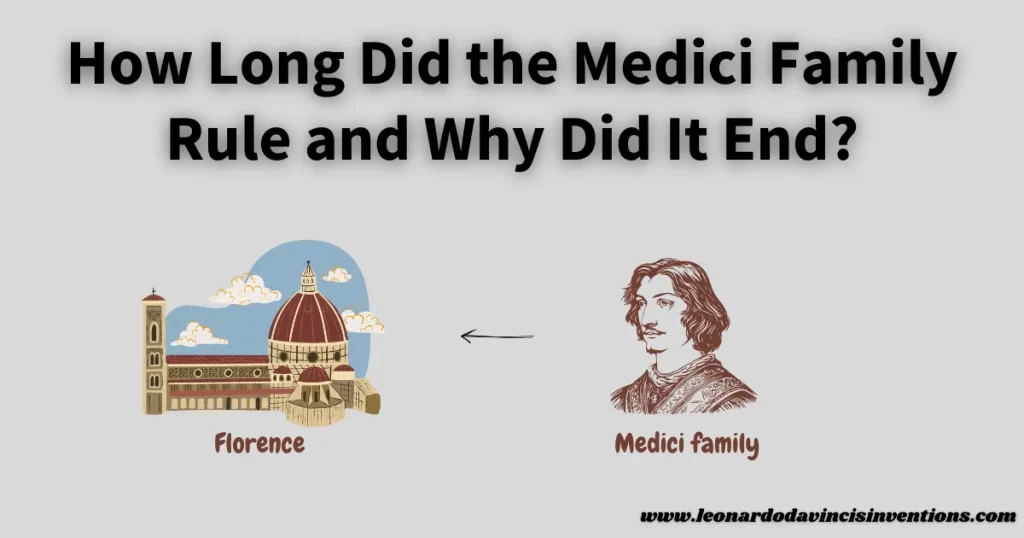
How long did the Medici family rule? This question often puzzles history lovers and anyone interested in Florence’s rise to fame.
You are in the right place if you have ever wondered how a single family could shape art, politics, and power for generations.
This article will explain the facts and clarify their long rule and dramatic end.
The Medici family ruled Florence for approximately 300 years, from 1434 until the dynasty came to an end in 1737.
Their influence shaped much of Europe, with periods of exile but remarkable comebacks.
The Rise and Duration of the Medici Family Rule in Florence and Tuscany
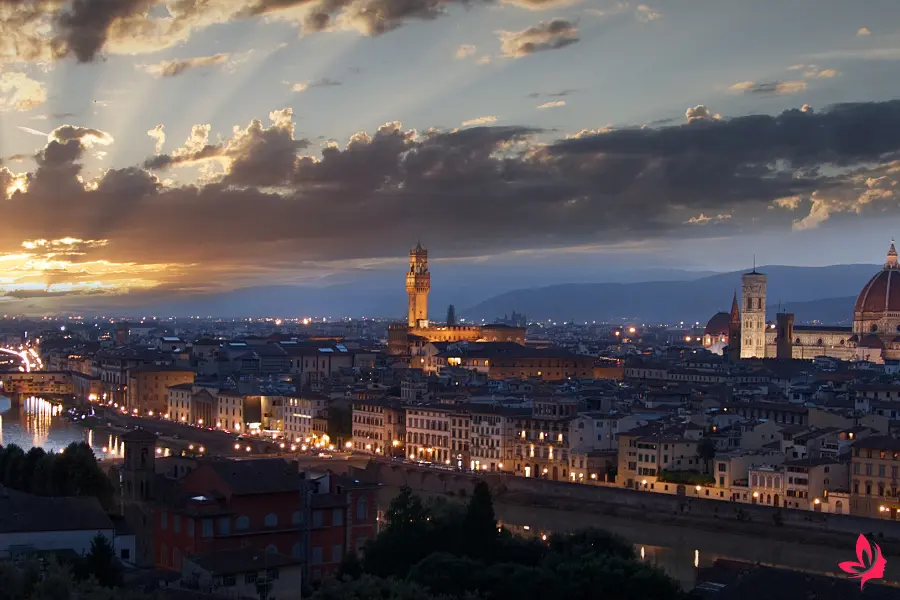
The Medici family’s path to power shaped Florence for centuries.
Their political leadership, banking success, and generous patronage transformed Renaissance Italy, leaving a lasting mark on Tuscany’s art and government.
Origins of the House of Medici and Their Banking Success
The House of Medici began its rise in Florence during the late 1300s.
Giovanni di Bicci de’ Medici, born in 1360, started the Medici bank.
This institution grew quickly, managing money for the papacy and wealthy European merchants.
The Medici bank became a symbol of status, trust, and advancement, enabling the Medici family to gain significant economic and political influence.
With their growing wealth, the Medici entered the Florence political scene.
Their banking network let them form strategic alliances and support candidates for government positions.
By the early 15th century, the Medici family had become known as one of Italy’s most respected banking dynasties.
How Long Did the Medici Family Rule Florence from 1434 to 1737?
The Medici family ruled Florence and later Tuscany from 1434 to 1737, with brief interruptions.
Their governance began when Cosimo de’ Medici took control in 1434, turning Florence into a center of Renaissance art and culture.
Over the next three centuries, Medici rulers held power, except during two periods of exile: from 1494 to 1512 and from 1527 to 1530.
Their rule encompassed the region’s transformation into the Grand Duchy of Tuscany, which began in 1569.
Medici control ended with Gian Gastone de’ Medici’s death in 1737, marking the close of a chapter in the over 300-year leadership of the Medici dynasty.
Cosimo de’ Medici and the Establishment of Political Power
Cosimo de’ Medici, sometimes called Cosimo the Elder, became the effective ruler of Florence in 1434.
He balanced rival factions in the Florence government and kept the family’s power intact without taking a formal title.
Cosimo cemented his position by using his banking connections, respected reputation, and generous patronage.
He avoided open displays of authority and worked behind the scenes.
Under his leadership, the Medici family established alliances with prominent families and secured key positions in the republic.
Cosimo’s rise marked the beginning of the Medici’s dominance in Florence and earned him recognition as the city’s unofficial leader.
The Role of the Medici Bank in Building Wealth and Influence
The Medici bank played a central role in the family’s rise.
At its peak, it had branches in major cities such as Rome, Venice, London, and Geneva.
By handling papal finances, the Medici gained the trust of the Catholic Church.
This access allowed the family to secure church offices, obtain political favors, and expand business ventures.
Table: Key Branches of the Medici Bank
| City | Important Clients |
|---|---|
| Rome | Papacy |
| Venice | Merchants |
| London | English Nobility |
| Geneva | Bankers |
The bank’s financial success funded arts, architecture, and the Medici patronage system.
Their prosperity influenced many aspects of Florentine life and reinforced their standing across Renaissance Italy.
Florence’s Golden Age Under the Medici as De Facto Rulers
Florence experienced its “golden age” under the leadership of the Medici family.
Cosimo de’ Medici and his descendants, like Lorenzo de’ Medici, supported artists such as Michelangelo, Leonardo da Vinci, and Botticelli.
This support triggered an explosion of cultural achievements now linked with the Renaissance.
Medici rulers maintained peace and prosperity, encouraging trade and education.
They rebuilt parts of Florence, funded academics, and established a legacy in science, philosophy, and visual arts.
The Medici palaces and public buildings remain visible symbols of their commitment to the city’s growth and the advancement of culture.
Medici Family Governance and Cultural Impact During the Renaissance
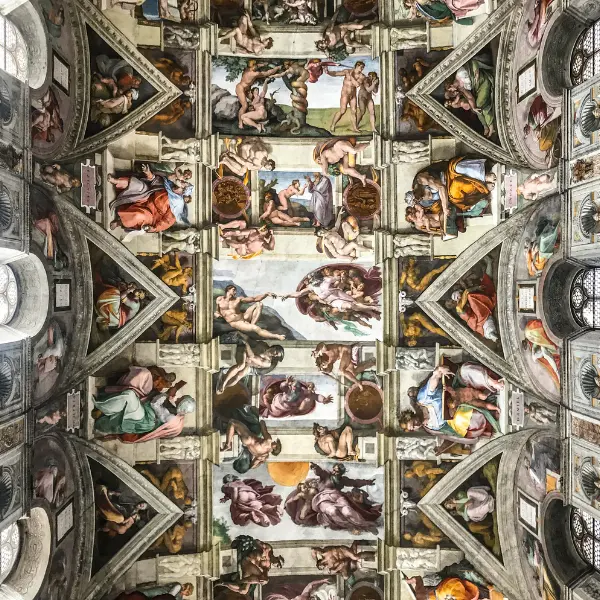
The Medici family changed the course of art and government in Florence by supporting many of the era’s greatest painters, thinkers, and architects.
Their power, built on banking and political leadership, lasted from 1434 to 1737 and significantly contributed to shaping the Renaissance in Italy.
Lorenzo de’ Medici’s Patronage of the Arts and Renaissance Culture
Lorenzo de’ Medici, also known as “Lorenzo the Magnificent,” was one of Renaissance Italy’s most important patrons of the arts.
His sponsorship made Florence a center for culture and creativity in the late 15th century.
He supported artists like Sandro Botticelli and Leonardo da Vinci, as well as thinkers such as Michelangelo.
His court included poets, philosophers, and architects who thrived under his leadership.
Lorenzo invested his family’s wealth into art, libraries, and scholarship.
His actions helped inspire the spread of Renaissance ideas and cemented Florence’s golden age as a place where innovation and the arts flourished.
Medici Contributions to Art and Culture in 15th and 16th Century Italy
The Medici family leveraged the influence and wealth of the Medici bank to support art and architecture throughout Florence.
They commissioned famous works such as Brunelleschi’s dome for the Florence Cathedral.
They promoted the careers of artists, including Donatello and Filippo Lippi, and helped publish scientific works.
The family’s patronage extended to the construction of the Uffizi Gallery and the Medici Palace, which showcased art and demonstrated their status.
By funding these projects, the Medici family advanced art and science during the 15th and 16th centuries.
This left a profound impact on Italian and European culture.
Political Leadership and the Medici Dynasty’s Influence on the Florence Government
The Medici family served as de facto rulers of Florence for nearly 300 years, shaping its government and political structure.
Starting with Cosimo de’ Medici in 1434, they held power through financial control and strategic marriages.
Their leadership saw Florence become less of a republic and more controlled by one family.
The Medici sometimes faced political exile, such as during the periods of 1494-1512 and 1527-1530, but they always managed to restore power until their final rule ended in 1737.
Aided by their banking success, the Medici replaced rival families, shaped policies, and helped Florence avoid many conflicts that plagued other Italian city-states.
The Grand Duchy of Tuscany and Medici Rule in the 17th Century
In 1569, Cosimo I, a member of the House of Medici, became Grand Duke of Tuscany.
This gave the family new authority beyond Florence, covering most of central Italy.
As rulers of the Grand Duchy, the Medici utilized their title to enhance trade, construct new cities, and promote scientific advancements.
They hosted figures like Galileo Galilei, further connecting the dynasty to progress in science and art.
The Medici dynasty continued as grand dukes through the 17th century until the line ended with Gian Gastone de’ Medici in 1737.
Medici Patronage System and Its Legacy Among Renaissance Italy’s Patrons of Artists
The Medici patronage system became a model for other powerful families during the Renaissance.
They provided artists and thinkers with money, workspaces, and protection in return for masterpieces and loyalty.
This system enabled unknown artists to gain fame, funded numerous public works, and disseminated Renaissance culture throughout Europe.
The Medici support helped establish Florence as a center for art and learning.
The lasting legacy of the Medici family can be seen in museums, churches, and city squares, where their contributions to culture and art are still celebrated today.
The Decline and End of Medici Family Rule: Causes and Consequences
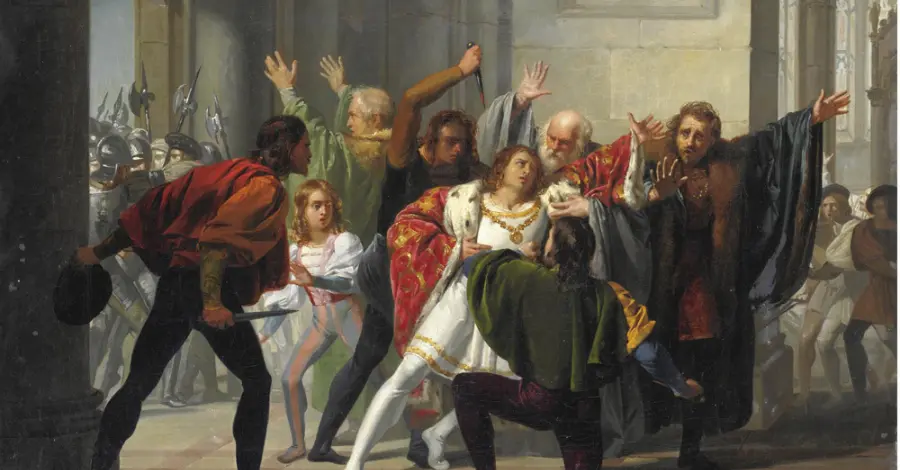
The Medici family’s long-lasting political power began to slip as unrest, weak leadership, and external threats challenged their hold on Florence and Tuscany.
As the Medici dynasty weakened, internal succession struggles and external pressures shaped the end of their rule, leaving a lasting impact on art, culture, and government.
Medici Exile Periods and Their Impact on Political Power Struggles
Throughout the 15th and 16th centuries, the House of Medici experienced two periods of political exile (1494-1512 and 1527-1530) that reshaped Florence’s power balance.
The first significant exile happened in 1494 when anti-Medici factions expelled the family.
This brought turmoil to Florence’s government and opened the door to rival powers.
The Medici returned in 1512 with help from outside allies, only to be expelled again in 1527.
Both exile periods weakened their grip on Florence, signaling shifting alliances.
These struggles forced the Medici to rely even more heavily on foreign support, leading to fluctuations in Florentine leadership.
Succession Challenges and the Role of Gian Gastone de’ Medici in the Family Downfall
Succession issues played a key role in the fall of the Medici dynasty. Unlike earlier rulers such as Cosimo de’ Medici and Lorenzo de’ Medici, the later generations failed to produce strong heirs.
Many Medici heirs died young or without children. Gian Gastone de’ Medici, the last Grand Duke, struggled with personal isolation and political weakness.
He had no heir. His death in 1737 marked the end of the Medici family’s rule in Tuscany.
After Gian Gastone, Florence lost its Medici power base, and foreign rulers took control.
The Medici Family’s Political Exile and Restoration Attempts
Repeated exiles forced the Medici to attempt to restore their power through diplomacy and military support. Key family members, such as Alessandro de’ Medici and Cosimo I, built alliances with the Holy Roman Empire and other European leaders.
Each return to power required concessions, which limited the Medici’s influence over Florence’s government. Restoration depended on foreign armies, which reduced support among local citizens.
These comebacks damaged the Medici family’s prestige and created resentment. The House of Medici’s political returns were always more fragile than their original reign.
How Wealth and Influence Diminished, Leading to the End of the Medici Rule
The Medici family amassed wealth through banking, real estate, and their control over Florence’s trade. Over time, mismanagement, wars, and market fluctuations led to the collapse of the Medici bank.
This loss of financial power meant the Medici could not maintain their traditional patronage or influence over art, politics, and culture. Financial difficulties made it challenging for the family to support the Medici patronage system that fueled Florence’s golden age.
The reduction in wealth limited their ability to fund public works and art
The Medici Legacy After 1737 and Its Lasting Cultural Impact
The Medici family’s rule ended in 1737, but their influence on Renaissance Italy and Europe continued. Their patronage of artists created landmarks, including the Medici Palace and many art collections.
The Medici coat of arms continues to symbolize Florence’s past power and culture. Many halls, museums, and artistic institutions in Tuscany remain connected to the legacy of the Medici family.
Their investments made Florence a center of art and learning during the Renaissance. Historians view the Medici as pivotal in shaping political leadership, government, and cultural life in early modern Europe.
Frequently Asked Questions
The Medici family played a pivotal role in shaping the Renaissance and controlled Florence for nearly 300 years. Their history includes years of exile, political intrigue, and a lasting influence on Italian culture and wealth.
How did the Medici family lose power?
The Medici family lost power due to political opposition and the lack of a suitable male heir. Rival factions drove them out of Florence in 1494 and 1527.
After returning, the family faded away when the last Medici ruler died in 1737, bringing the dynasty to an end.
Are there still Medici families today?
Direct descendants of the ruling branch are no longer alive. The main Medici line ended in 1737.
People with the Medici surname may still live in Italy, but they do not hold any power or official titles.
When did the Medici bloodline end?
The Medici bloodline ended in 1737 with the death of Gian Gastone de’ Medici, who had no children. This marked the end of almost three centuries of Medici rule in Florence.
How long was Cosimo Medici exiled from Florence?
Cosimo de’ Medici, the Elder, was exiled from Florence in 1433 due to political enemies. His exile lasted about one year; he returned in 1434 after his supporters regained control.
What was the dark side of the Medici family?
The Medici family took part in several plots, political murders, and faced accusations of corruption. Some members used ruthless tactics against rivals and manipulated politics to secure control over Florence.
Their banking operations also faced scandals and financial troubles at times.
Who inherited the Medici wealth?
After the last Medici ruler died, much of their wealth, art, and property went to the city of Florence or the Austrian House of Lorraine. Many Medici treasures remain in Florence’s museums and collections.
Who betrayed the Medici family?
Various figures opposed or betrayed the Medici over the years. The Pazzi family led the Pazzi Conspiracy in 1478, trying to kill Lorenzo de’ Medici and his brother.
Other rival families and anti-Medici factions also worked to oust the Medici from Florence.
Who was the most powerful family in Italy?
During the Renaissance, the Medici family was widely regarded as the most powerful in Italy, particularly in banking and politics. Families like the Sforza in Milan or the Borgia in Rome were also influential.
However, the Medici dominance over Florence and Tuscany was unmatched for centuries.
Who overthrew the Medici family?
Anti-Medici factions, including republicans and rival families like the Pazzi, overthrew the Medici. These groups took control during the exiles of 1494 and 1527.
After their final decline, the Austrian House of Lorraine took power in Tuscany.
Why was the Medici family corrupt?
The Medici family was accused of corruption because it controlled political and banking institutions in Florence through bribery and manipulation.
Their rule relied on forming alliances. Sometimes, they used illegal methods to secure and keep power.
Powerful families often used these practices during that time.
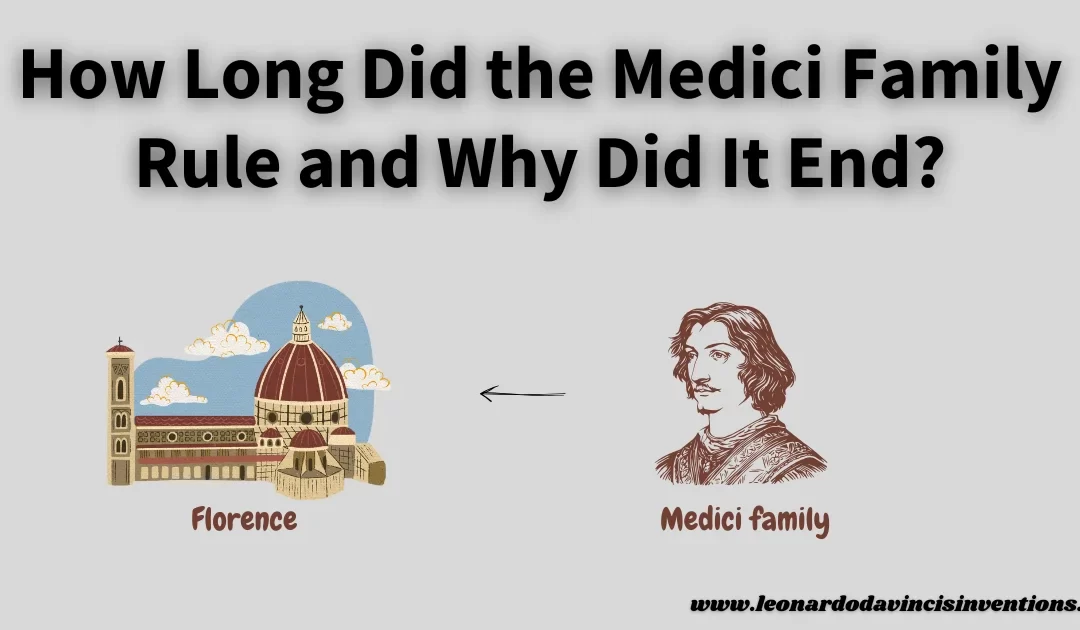
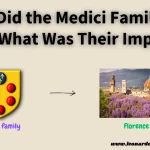
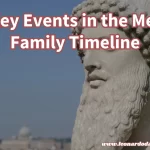
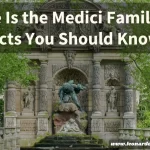
 Leonardo Bianchi,
the creator of Leonardo da Vinci's Inventions.
Thank you for visiting
Leonardo Bianchi,
the creator of Leonardo da Vinci's Inventions.
Thank you for visiting